In a saturated search marketing agency landscape clients have multiple options on who and where they spend their marketing agency budget.
The key to keeping clients spending money with your agency:
Building unique relationships with your clients.
Agency account managers report directly to clients and naturally have the biggest influence on client retention in any agency.
Account managers are in charge of highlighting the great results an agency is delivering, ensuring the activities being undertaken by the agency align with the client’s objectives and trying to develop a long-lasting personal relationship with their contacts at the client’s business.
The long-term client relationship aim of an agency account manager should be to progress from that of a technical expert, where you are simply acting as a service vendor for your client, to a trusted business advisor.
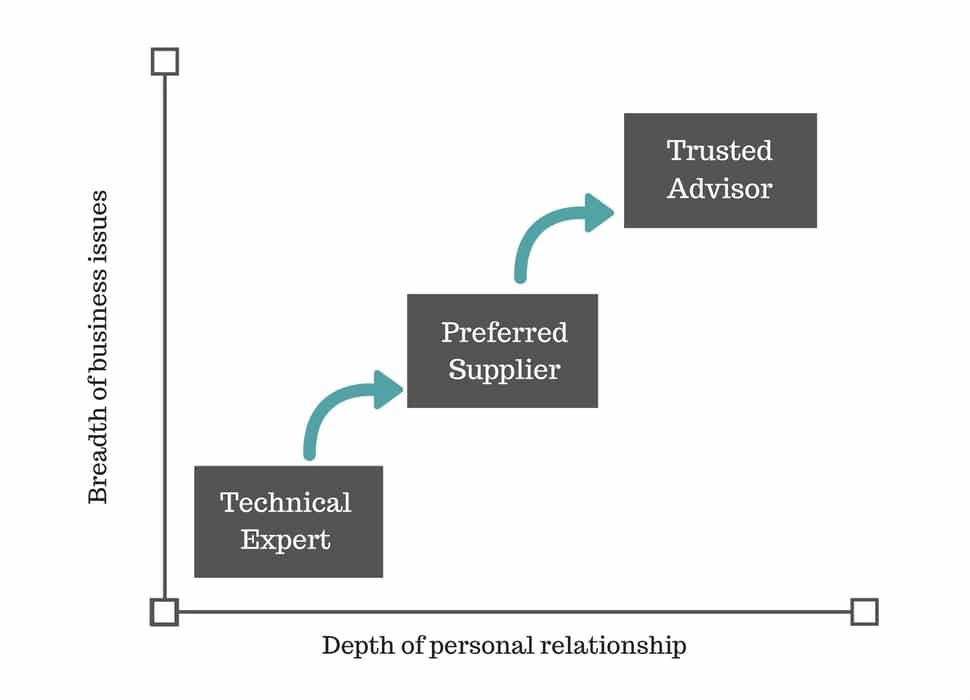 Adapted from ‘The Trusted Advisor’, David Maister
Adapted from ‘The Trusted Advisor’, David MaisterTrusted business advisors are able to help their clients earn more business through their marketing efforts and have a genuine influence on where they spend their marketing budget.
Here are six account management strategies that will help you become a trusted advisor to your clients and help you to build long lasting relationships to boost client retention.
1. Build a Rapport With Your Clients
Asking Good Questions
The most obvious way of identifying client goals is to ask the right questions in the kick-off meeting.
My agency has developed a range of questions you can use during a client kick-off process to get to know your client which will help gather essential information to help align your activities to the clients goals.
Example questions include:
- What are your business growth & sales objectives over the next 2 years?
- What are your best selling products or services? Why?
- Who are your main competitors and what sets you apart from them?
- What’s the value of a client to your business?
- What’s your marketing plan for the year ahead?
- Who are you looking to target?
Preparing relevant questions in advance of client meetings is key and will help ensure you’re able to hit the ground running in the first few months of any new client relationship.
2. Identify Client Personas
There is no one-size-fits-all approach to client management. However, many clients in an agency portfolio will share similar characteristics. In most cases, clients will display characteristics from one of the following four personas.
Client A: The Hawk
This type of client is particularly keen on growing their business quickly and will be desperate to increase traffic to their site as fast as possible. These clients may not be as strict with their budget as others and will be open to new methods and additional budget as long as you can generate growth.
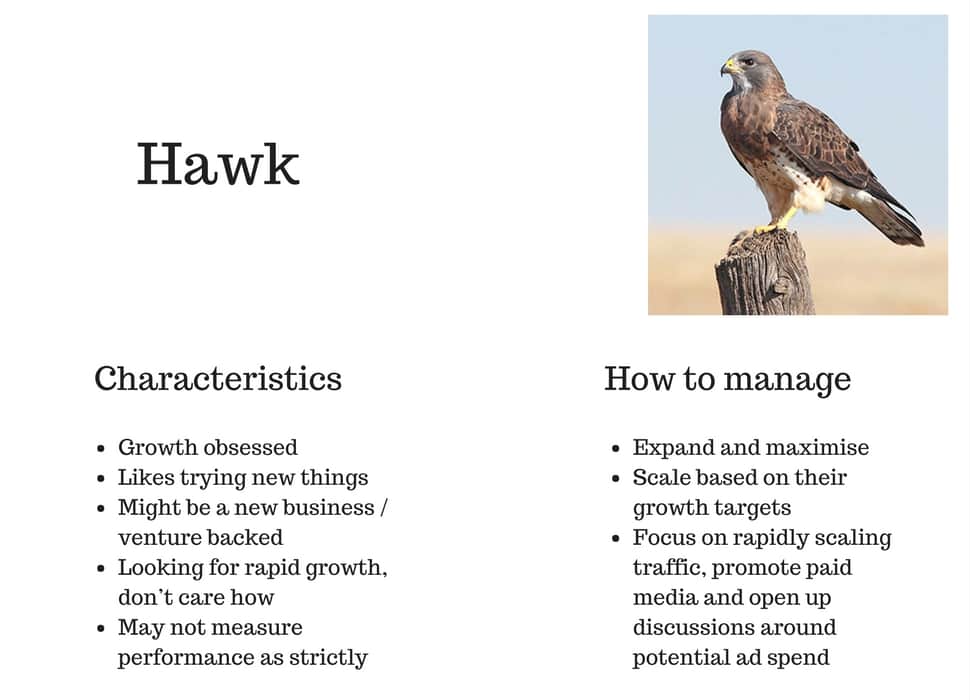
Managing these clients requires a brave approach. Don’t be scared to suggest new ways of doing things or additional investment. If the aim is growth then an obvious focus should be paid media rather than a long-term organic approach.
Client B: The Fox
Plenty of clients fit this persona. The fox is keen to grow and willing to invest but they will expect you to prove the benefits of any investment to them before they proceed. They will strictly measure performance and you must put together a solid business case for any additional investment.
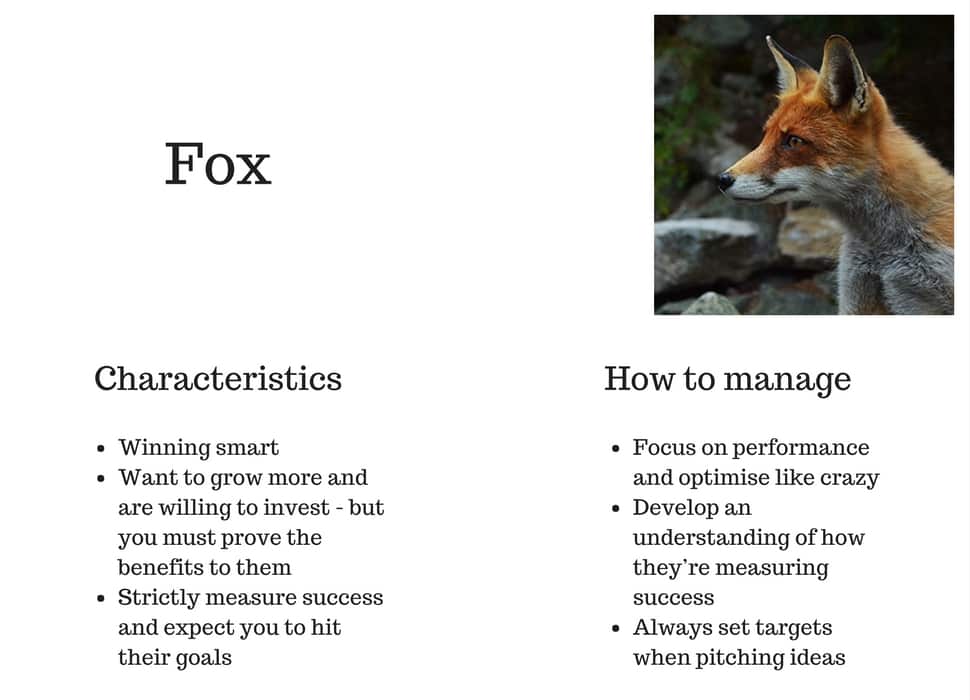
Managing this type of client should focus on building an understanding of their internal targets, agreeing KPIs such as target ROI / CPA figures and ensuring any activities you suggest are able to deliver against those targets.
Client C: The Mouse
The mouse represents clients with unrealistic demands. They are often reluctant to invest in marketing activity even if it’s delivering relatively strong results. You can put together a solid business case but often this still won’t be enough for the client to give the go ahead.
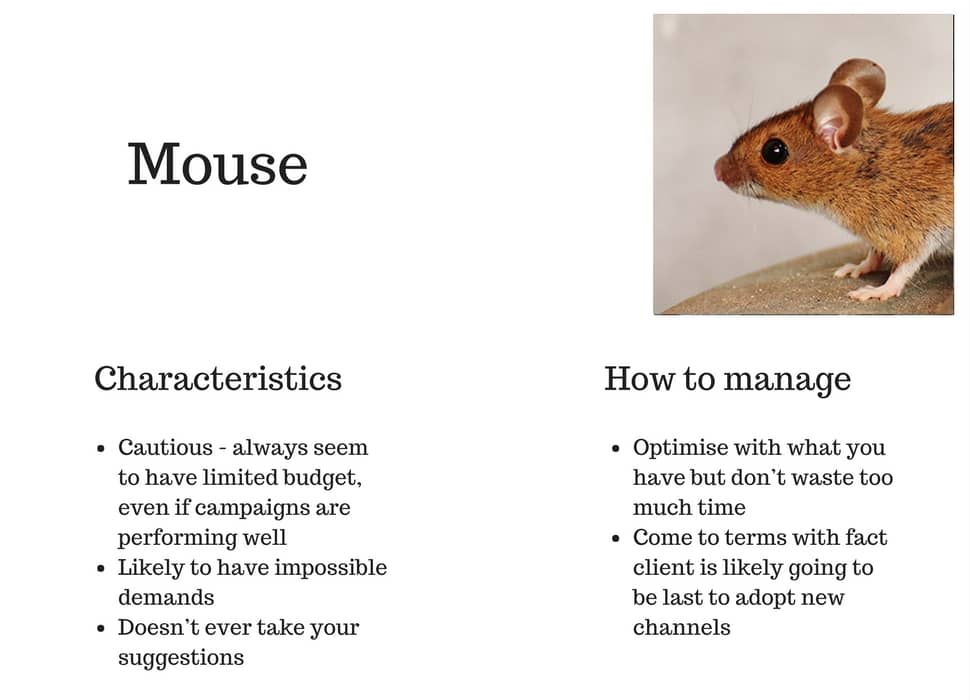
Managing this type of client requires patience. It’s often a good idea to invest time in training the client so they can better see things from your perspective, but come to terms with the fact that these clients will likely be the last to adopt new channels.
Client D: The Panda
These clients are classed as struggling companies, potentially with a dying business model. They can also include clients who have little direction and no idea internally about what types of goals they should be setting for their marketing activity.
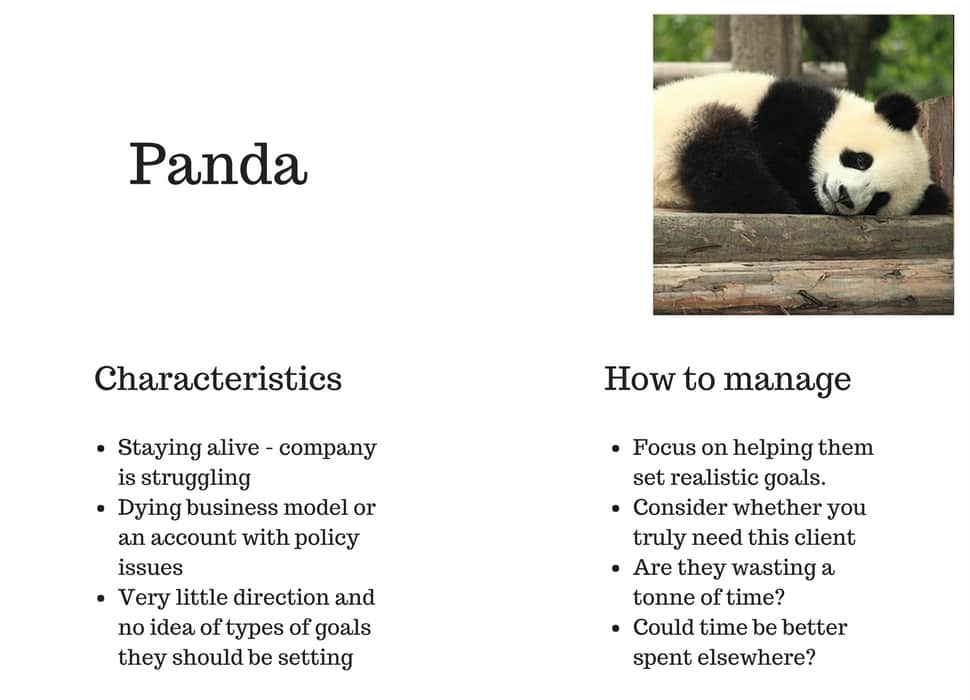
Managing a Panda may require a lot of time, often substantially more time than they can afford, so it’s worth considering whether your agency truly needs to hold on to this type of client.
3. Identify Client Primary Motivating Factors
For your clients, their primary motivating factor is effectively what gets them out of bed in the morning. This may be getting a promotion, being recognized as an expert internally, or learning how to implement marketing techniques themselves.
Here’s a template you could use to plot the primary motivating factors of each of your clients:

It’s important to identify your client’s primary motivating factors as these will differ from the objectives of their business.
For example, an objective for the business may be to generate more sales online, but a primary motivating factor for your contact at the business may be to pass their Google AdWords exams and be recognized as an industry expert.
By recognizing and reacting to these motivating factors you can build deeper personal relationships with your clients.
4. Practice Radical Honesty
Radical honesty is a term coined by Dr. Brad Blanton. Radical honesty is about saying what you mean, but never saying it mean.
Radical honesty can be good in situations where you feel strongly that a client has unreasonable expectations.
For example, if your client has an awful website and has set what you believe are unachievable online sales targets unless they invest in a new platform, don’t just sit there and nod your head – tell them that they won’t hit their targets without getting a new site!
The most common mistake agencies make is taking on clients without being honest at the outset and letting them know their targets are probably unachievable without fundamentally changing the way they operate.
5. Plan for Calls & Meetings
Calls and meetings are obvious ways of communicating with clients but the key here is to ensure you prepare for any pre-arranged calls or meetings to ensure you’re able to get what you want out of them.
The basic steps to take in preparation for a call or meeting are as follows:
- Set an agenda.
- Stick to your timings.
- Define the roles and responsibilities of each team member.
- If pitching, think of any objections you’re likely to face.
- Define the next steps you’d like to take on the client account.
At the very least you should prepare an agenda prior to every call/meeting you schedule with a client. This will ensure you don’t catch them off guard and help avoid the perception that you’re just meeting for the sake of it.
6. Influence Your Clients
Influencing clients is an important part of an agency account managers role.
For example, you may wish to persuade your clients to invest additional budget into a campaign, try out a new marketing channel, or to sign off a piece of content you’d like to launch. Each of these scenarios will be more likely to be agreed with the use of influencing techniques.
The six principles of persuasion and influence were originally documented by Robert Cialdini. Here are six principles that account managers could utilize to better influence their clients:
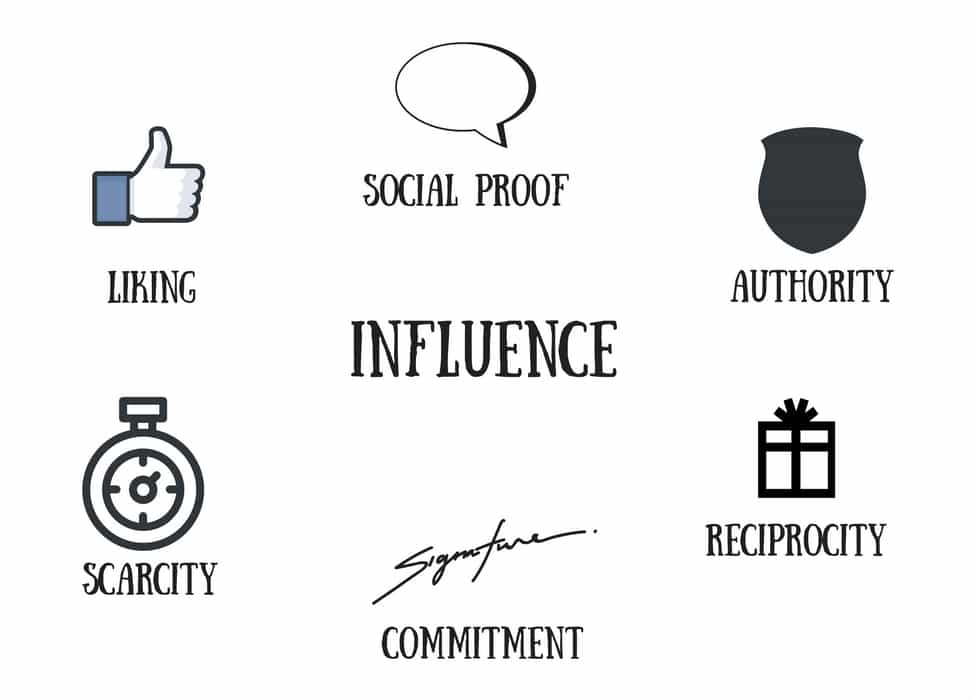
For example, account managers could use authority in the form of their highly qualified team of experts to influence a client that the strategy they’re suggesting is the best approach for them. Furthermore, an account manager could use the social proof principle to suggest that a client should invest money in a certain marketing channel because their competitors are currently doing so.
Conclusion
Moving from the most basic level of a client relationship to the status of a trusted advisor will not only help you retain more clients but also bring in more business as your contacts move to other companies over time.
Image Credits
Featured Image: Pexels
Screenshots taken by Ben Wood, July 2017
Artwork by Ben Wood using Canva.




